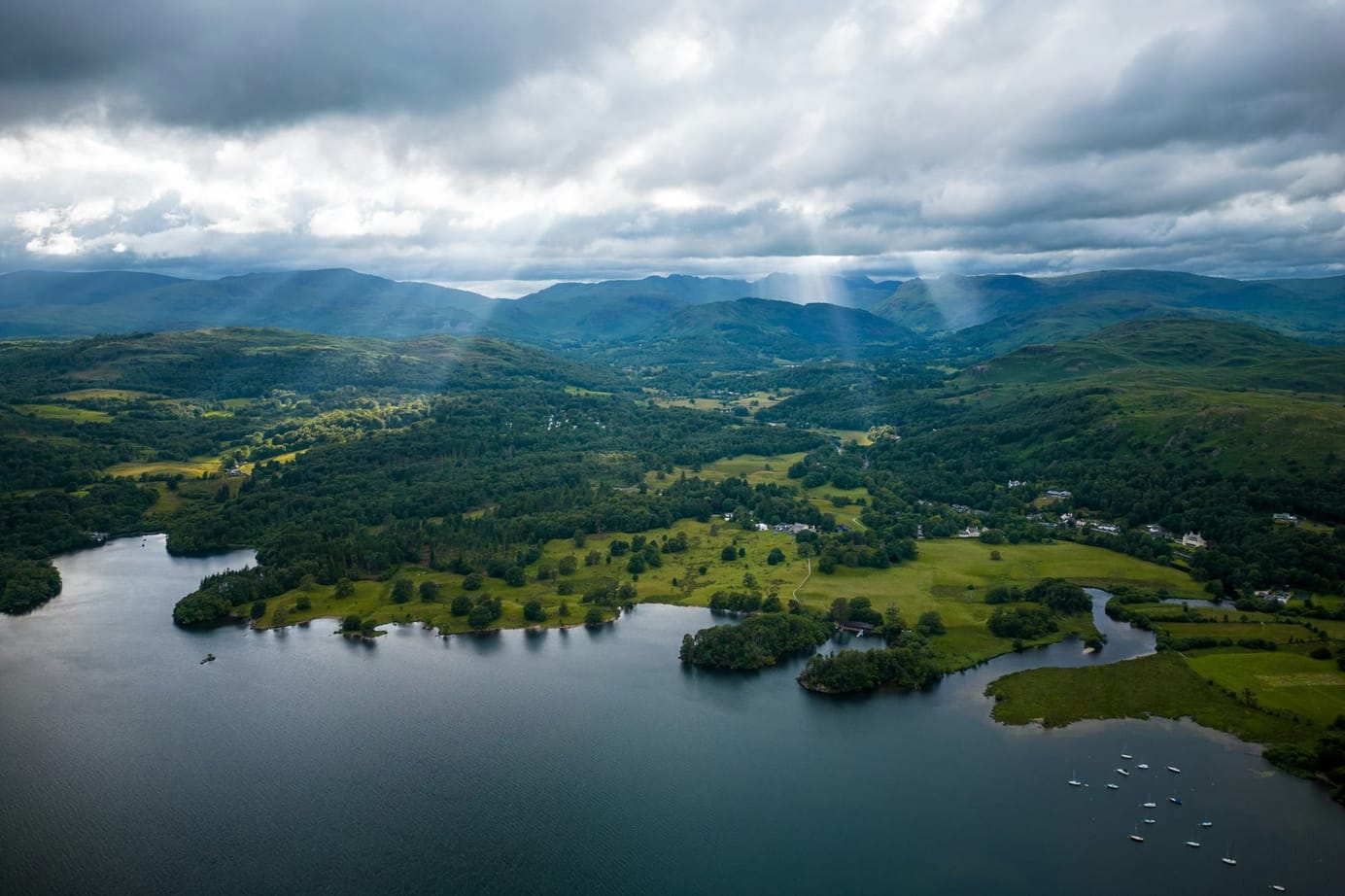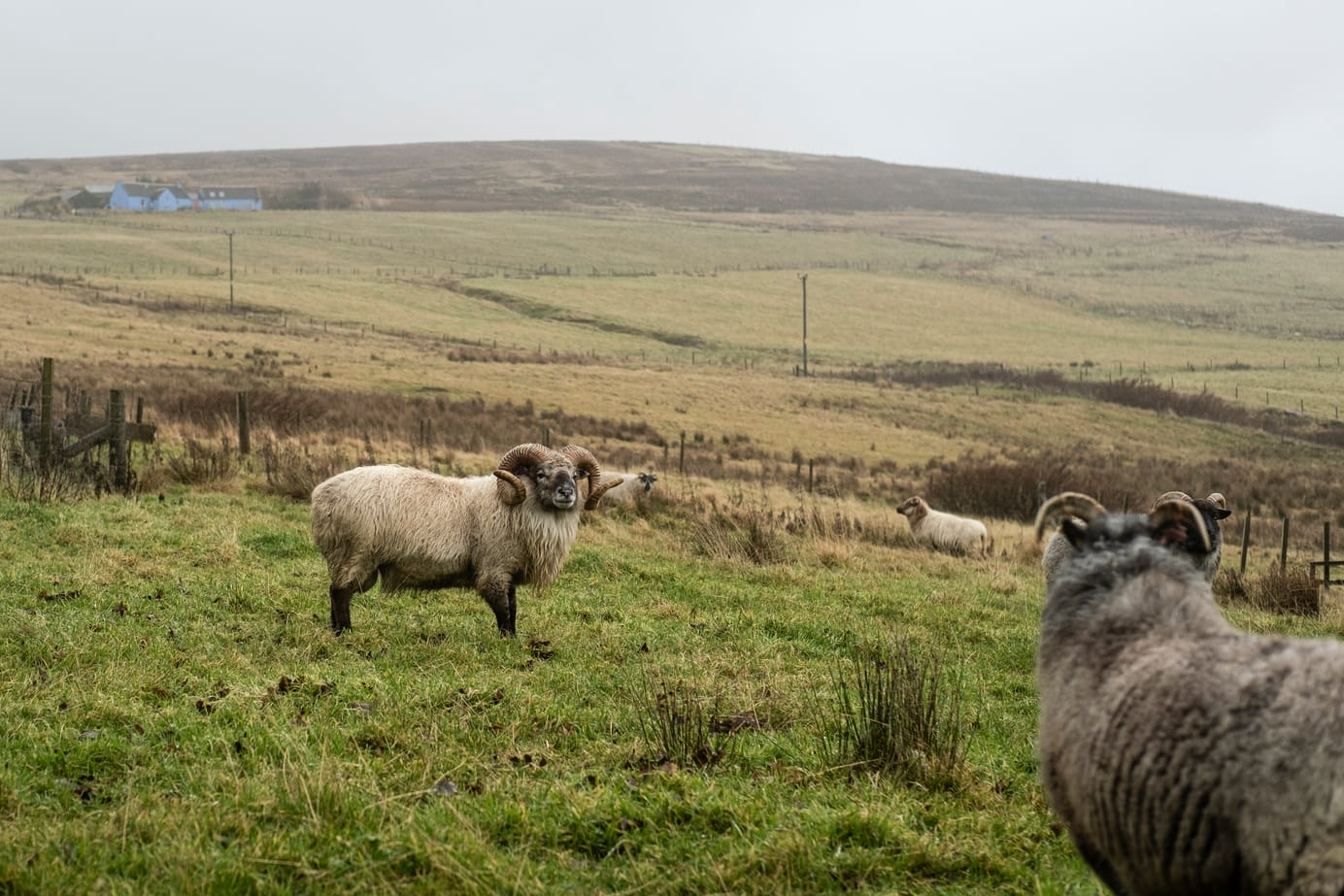
'We were the wolves': How we bought and rewilded an ex-dairy farm in Spain
In 2018, Katie Stacey and Luke Massey bought seven hectares of degraded land and named it Wild Finca. With little money or experience, they began to bring back nature.
Ever since Luke Massey and I met in the Zambian bush ten years ago, our lives have been filled with adventure.
We spent our early years travelling the globe, documenting the wildlife we saw along the way. Luke, always behind the camera, filmed and photographed, while I wrote the stories that ran alongside his visuals. My role also involved supporting him in various ways – like holding his ankles as he dangled precariously from a rooftop in Delhi to capture a shot of black kites.
We were living the dream. But dreams can be exhausting.
We loved the travel, the wildlife we encountered and the different cultures we experienced, but it was not sustainable, neither financially nor environmentally. We were living from job to job, and we felt on the edge of burnout. We needed a change.
Spain had already captivated us. Working there a few years back, on a story about the elusive Iberian lynx, we began to envision a different, slower-paced kind of life.
We were drawn to the north, to the Costa Verde in Asturias. In contrast to the ever-drying climate of southern Spain, here you’ll find verdant land sandwiched between a rugged coastline and the mountains of the Picos de Europa. There was the promise of Iberian wolves and Cantabrian brown bears as neighbours. It sounded like paradise.
In January 2018, we moved into a rented cottage with breathtaking views of the Picos. When we weren’t on the road, we immersed ourselves in our new surroundings, watching European wild cat hunt in newly-cut hay meadows, or lending a hand to a local ganadero (farmer) we had befriended at the local bar. It was he, that summer, who would introduce us to Wild Finca – the land that would eventually become our permanent home.
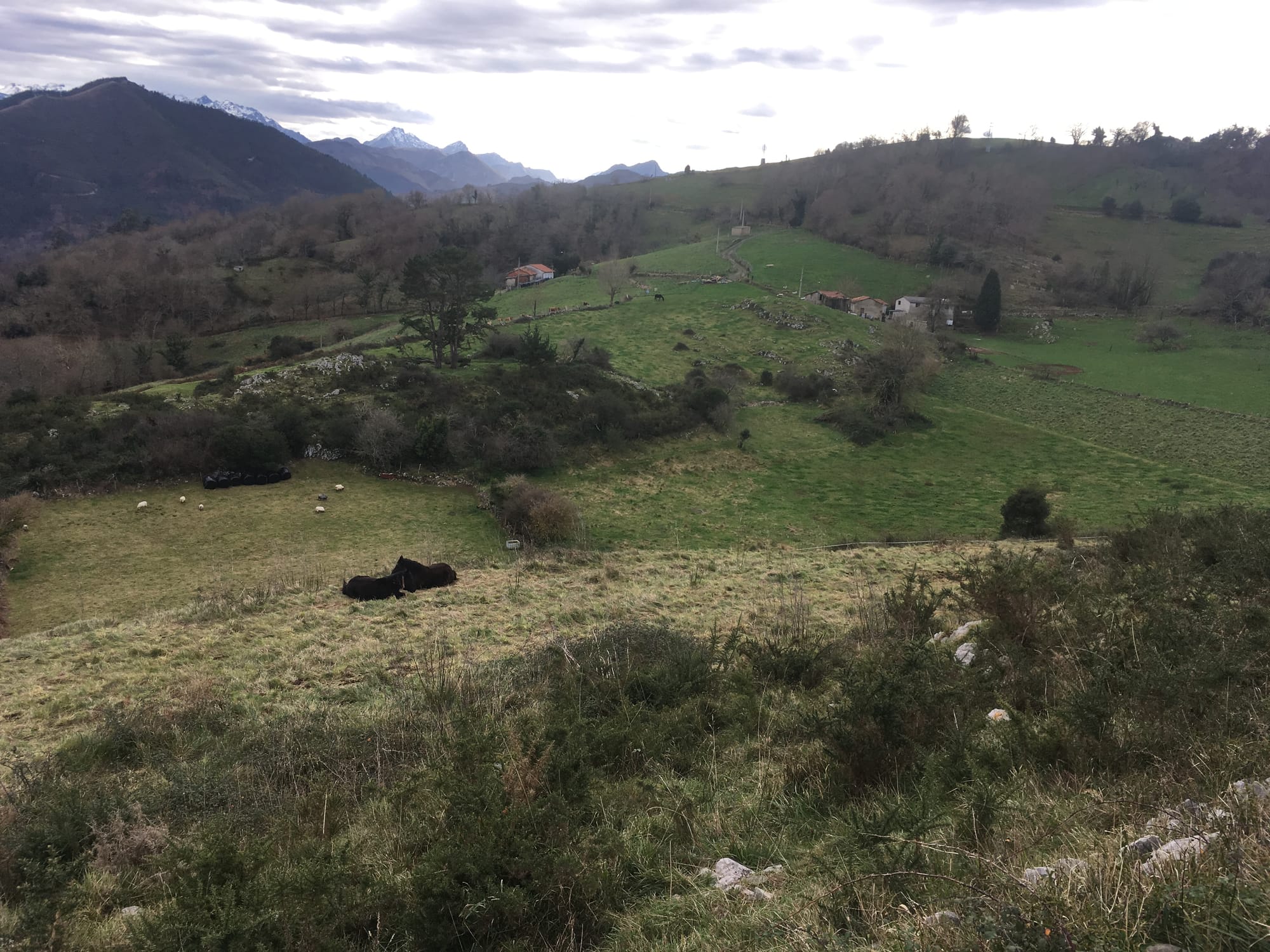
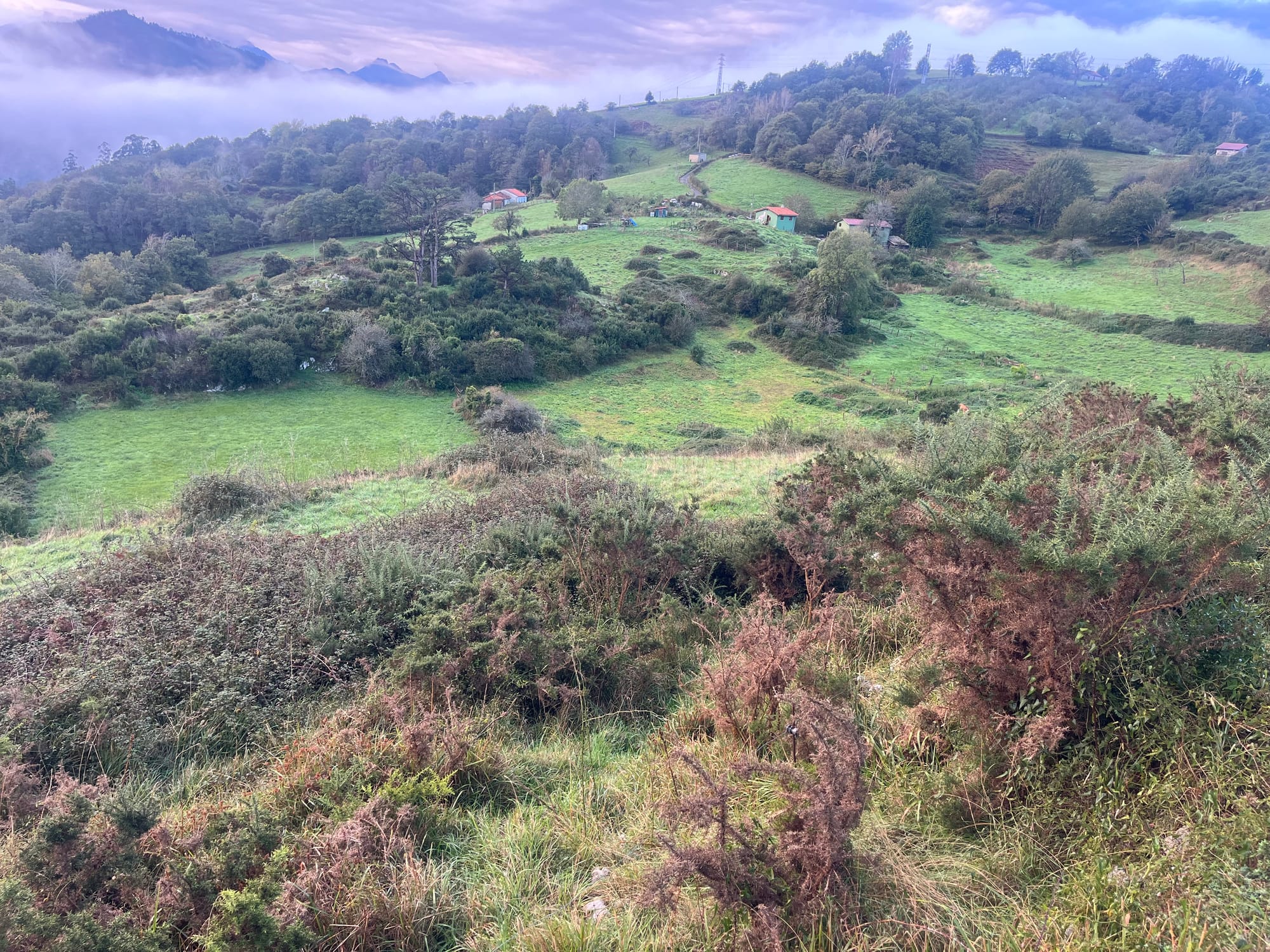
December 2019 vs October 2024
In Spanish, a ‘finca’ typically refers to a farm, but it can mean anything from a commercial operation to a piece of land. In this case, the finca in question was a collection of buildings in varying states of disrepair, but what really captured our hearts were the seven hectares of fields, scrub, and heath that surrounded them.
As we toured the land, Luke enquired about vultures. The owner reassured us that there were none – a sentiment rooted in the local belief that vultures prey on livestock. Just then, as if on cue, a griffon vulture cast a large shadow over us and swooped low. It felt like a sign.
A wild place
Wild Finca wasn’t always called Wild Finca. We coined the name to reflect our vision of transforming it into a wild farm.
When we bought the property, we agreed to rewild the majority of it – a concept we first encountered while filming at the now-famous Knepp Estate in West Sussex. We were so inspired by their work that we left with the dream of doing something similar ourselves one day.
Financial constraints made this dream unattainable in the UK, but in Spain, it was within reach. To put things into perspective, we paid €139k for Wild Finca, which is in an area where the local going rate for non-buildable rural land is approximately €1/m².
In the local context, the scale of Wild Finca was quite typical. Historically, most people here lived off the land, with farming as a way of life. Families would keep a house cow, a pig, chickens, perhaps some sheep, and a horse or donkey for cart pulling, along with a vegetable patch. Livestock were grazed extensively on communal lands or higher up in the Picos from May to October, followed by light grazing on their own land before the animals were stabled until the following spring. This meant land holdings remained modest.
Of course, a lot has changed in recent decades. However, large-scale operations, akin to British farms, are still rare in Asturias.
Farming the land in any sort of ‘traditional’ manner was never our goal. Although we hoped for Wild Finca to eventually sustain itself financially, we would never let this be at the expense of biodiversity: any income would be the by-product of a functioning ecological community. Meanwhile, Luke continued his work as a hybrid wildlife photographer, cameraman and guide, frequently travelling, while I took on freelance work as a marketing consultant.
Our vision was to create a home for ourselves and a sanctuary for nature. We began by designating 10% of the land for personal use. This included a food forest to provide fruit, nuts, herbs, and perennial vegetables, a vegetable patch, and an enclosed area for poultry.
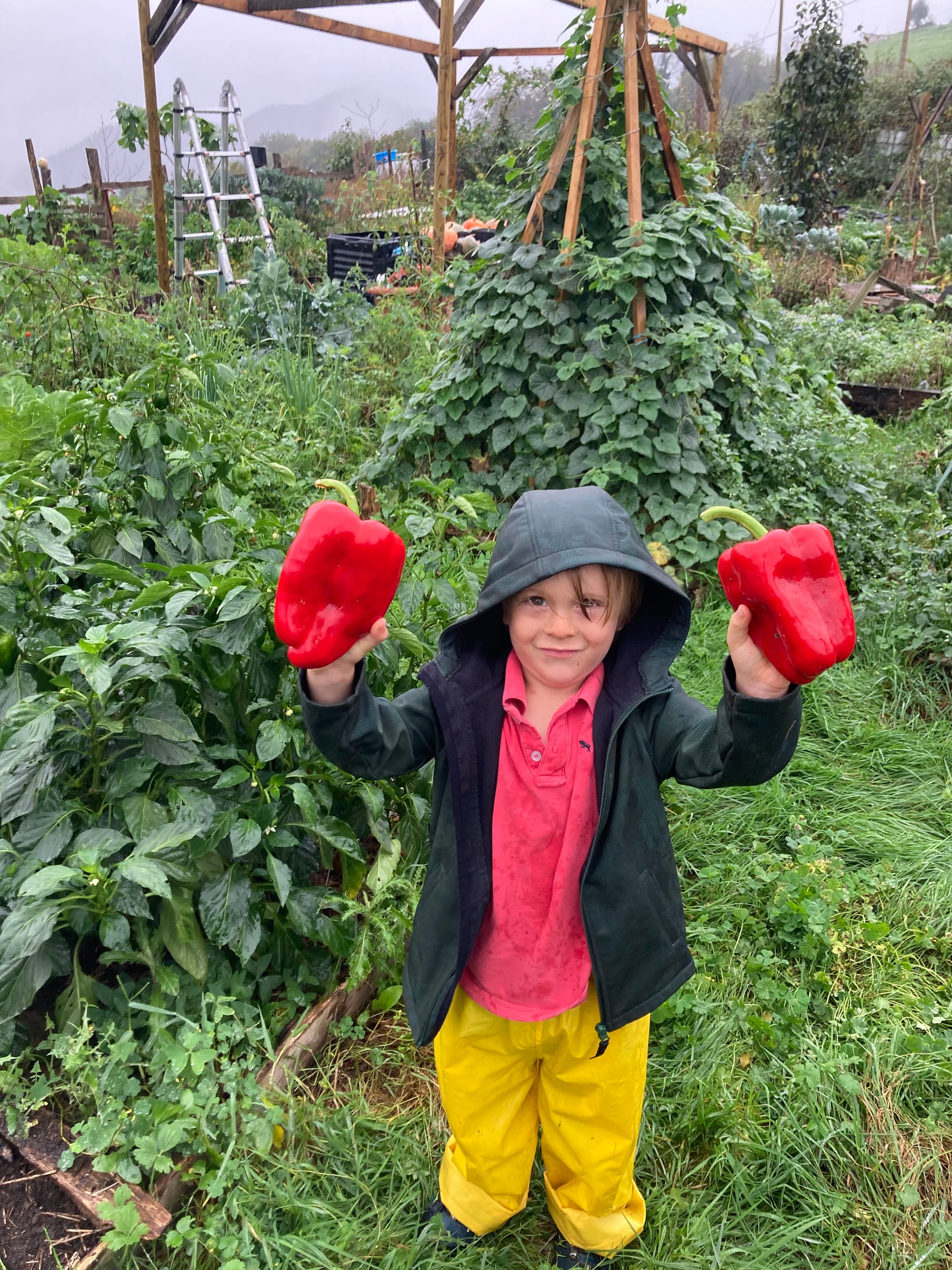
For the remaining land, we initially adopted a completely hands-off approach, much like Knepp, allowing natural processes to unfold. However, we realised within six months that this wasn't the way forward for us.
Without livestock and with a sparse population of wild grazers, the land quickly became a tangle of brambles. We realised that we were witnessing ecological succession that would eventually transform the area into forest, at the expense of the orchids, wasp spiders, red-backed shrikes, and Egyptian vultures that called Wild Finca home.
What we needed was a mosaic of habitats: scrub, grassland, woodland, ponds, hedgerows etc.
Learning to graze
Wild Finca had once been a dairy farm. But the owner had since retired and sold his herd.
When we purchased it, the finca was being loosely grazed by some chunky draft horses and a herd of cattle. Some succession was already taking place – the fields that had been used for fodder crops, for instance, had been returned to grass – yet an element of ‘cleanliness’ was maintained. There was very little scrub, and field boundaries were demarcated with electric fences or barbed wire.
Our journey has been a continuous learning experience. Neither of us had much experience in land management; Luke had volunteered on a nature reserve as a teenager, and my livestock experience was limited to keeping horses in a traditional British manner – pulling ragwort from overgrazed fields. On the whole, we were learning as we went, looking to the land to guide us.
Luke calls this approach Sponge Learning: absorbing bits and bobs from different people, books, podcasts and projects, from nature reserves to farms, and seeing how we can use these at Wild Finca to provide an even greater natural oasis.
We experimented with different numbers and species of animals. Grazing the land too lightly led to the loss of certain wildflower species, while grazing too heavily resulted in compacted soil. Our Xalda sheep (a native species) lasted two years before we realised their orchid and sapling-munching habits weren’t in line with our vision. In their place, we introduced other native domestic species – Asturcón horses and Casina cattle – whose grazing habits were more compatible with our goals.
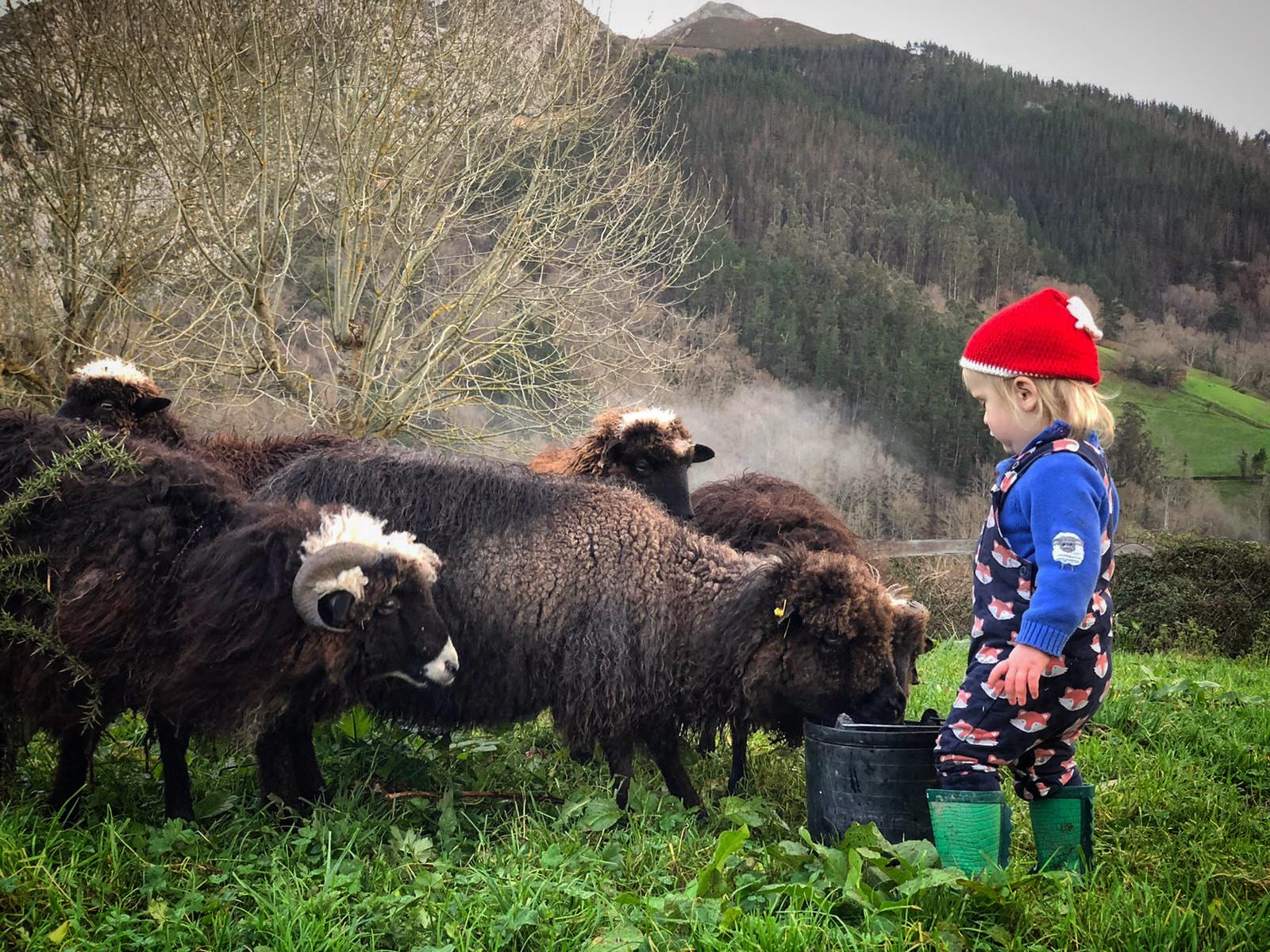
These larger animals served as proxies for the aurochs and tarpan that once roamed the area. Both of which went extinct at least 500 years ago on the Iberian Peninsula and are depicted in the 25,000-year-old Tito Bustillo cave paintings found just a few kilometres away. The dung of their domestic replacements became a vital food source for an increasing number of dung beetles, which in turn fed red-backed shrikes, badgers and other such wildlife.
However, the relatively small size of Wild Finca naturally limits how many horses and cattle we can keep on the land, which reduces their impact as proxies. Sometimes we have to take on the role of the aurochs or even the straight-tusked elephant ourselves.
Armed with a chainsaw, a brushcutter, or even just a hefty stick, Luke spends autumn and winter stamping, cutting, or crushing his way into the scrub, often carrying a pocketful of cattle treats, or a bundle of hay, to entice his bovine friends to follow behind.
This opens up new areas as others close behind. The reward comes in June – a scrubby glade with silver-washed fritillaries gliding over it, red-backed shrikes perched atop the bramble pillows, and garden dormice clambering along the dog rose tendrils.
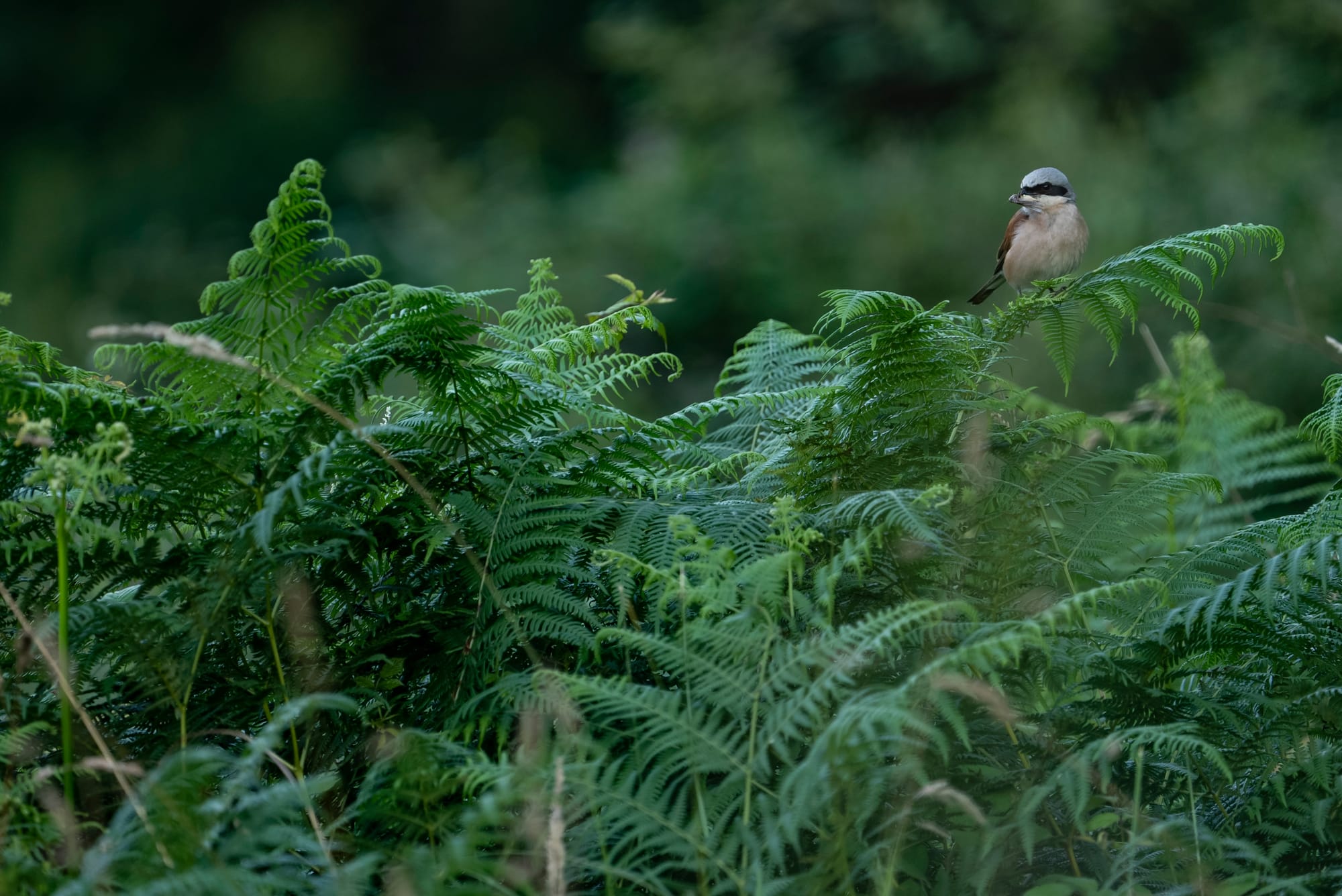
Initially, we adopted a free grazing approach, letting the animals choose where and when to graze. However, this led to issues: pond edges were damaged by animal hooves and saplings disappeared. Some swards ended up under-grazed, causing wildflowers to vanish, while other areas were grazed to oblivion.
We realised our approach needed more nuance. To address this, we divided the land into smaller blocks. Some areas were grazed more intensely but given longer rest periods to promote floral diversity, while others were grazed minimally or not at all to encourage scrub regeneration.
In essence, we were the wolves, moving our animals in imitation of how they would naturally move in the wild. Although Asturias is a stronghold of the Iberian Wolf, these predators have not been present at Wild Finca for over fifty years – and, given the ongoing human-wildlife conflict, we don't expect their return anytime soon.
We also partially adopted the wolf’s role as predator, culling the male lambs as a sustainable source of meat, although we spared the horses and cattle so they could continue as ecosystem engineers.
Life returns
As well as introducing grazers, we planted native trees and shrubs in exclosures along the new land divisions to create natural corridors and copses, with the intention of one day taking down the fencing.
With no standing water on the land, we began to excavate ponds. The results were astonishing: within months, amphibians had mysteriously appeared to spawn. Grass snakes mated in the shallows and dragonflies hawked over our meadows.
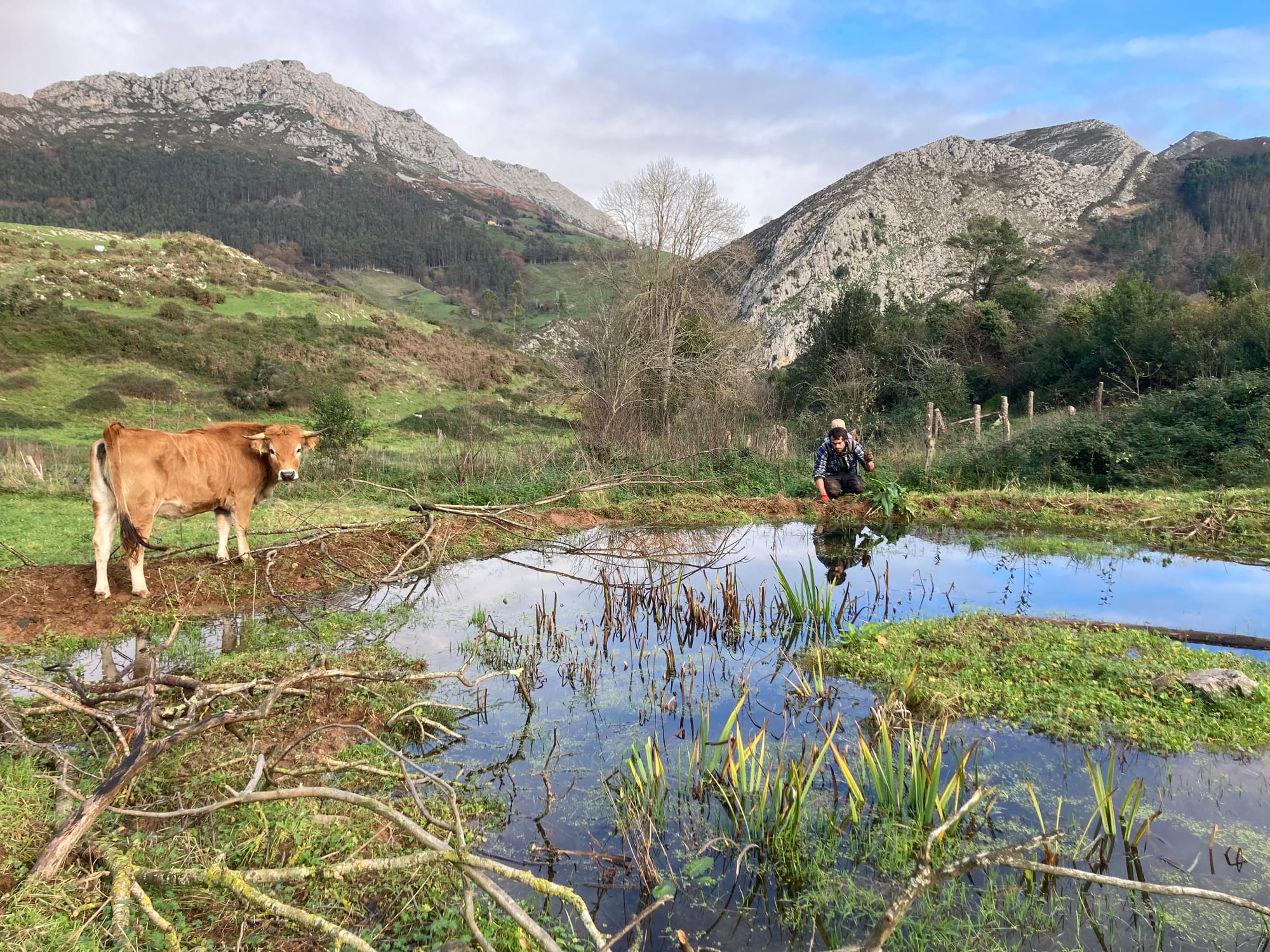
Although we didn’t conduct any first-year counts, the change in management – allowing scrub to exist, and adopting a completely hands-off approach from March to September – has undoubtedly increased birdsong and wildlife presence.
In our third year, a youth ecology group recorded sixteen species of bat and garden dormice in our nest boxes. Just five years after our arrival, we documented 113 different bird species passing through, overwintering, or breeding at Wild Finca. A key indicator for us was the increase in red-backed shrikes from one initial pair to three. We now regularly observe more mammals across the land, from roe deer to red fox, from red squirrel to pine marten.
Recently, I encountered a powerful question: What sort of ancestor do you want to be? Reflecting on this has clarified our intentions moving forward.
Since 2018, Wild Finca has expanded to nearly 15 hectares. While we look to grow slightly more to protect against the edge effects of neighbouring activities like chemical use and hunting, our main focus is on using Wild Finca as a beacon of inspiration.
I believe it is a myth that only large-scale rewilding can solve our ecological and environmental crises. By holding onto this misconception, we overlook the transformative potential of individuals making changes in whatever space they have.
Luke and I now have two young boys. As they grow, their fascination and passion for the natural world galvanises an even greater calling to share the magic of Wild Finca and invite others to learn from her in the same way we have.
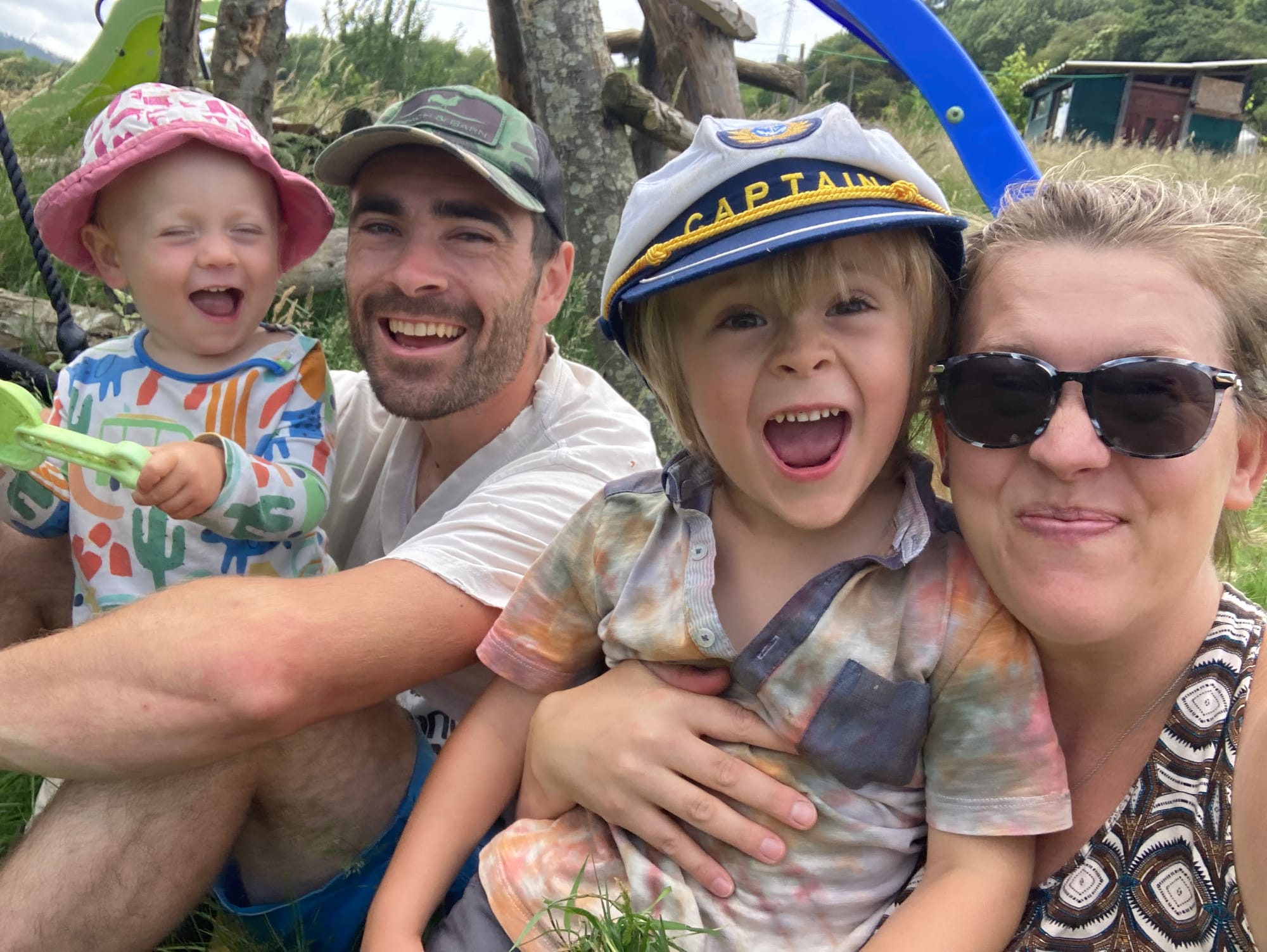
Today we offer in-person guided tours of Wild Finca and online Wild Finca Rewilding Retreats designed to transform people's relationship with nature. I hope to be remembered for inspiring others to seek a deeper connection with nature.
I also want to be remembered as hopeful. Hope is a powerful catalyst for change – not the kind made of dreams, but the kind forged through action.
Rebecca Hosking, a regenerative farmer in Devon and a guiding force in our Wild Finca journey, taught us that humans are as much a keystone species as the wolves, beavers and eagles that are the pinnacle of the rewilding movement.
As she wisely says: ‘Of all the species on this planet, [humans] have demonstrated the ability to profoundly change ecosystems, but unlike other species, we can and do change habitats to the detriment of all others. The key is realising we have a choice.’
Here, at Wild Finca, we are on our way to becoming that keystone species. We hope, in time, we can embolden others to find their place too.
Explore Wild Finca Live!
Join Luke on December 15th for a free, live, interactive online walk around Wild Finca. Subscribe to our newsletter at www.wildfinca.com to receive event details and stay updated on all things Wild Finca, including Katie's book, No Paradise with Wolves, due out Summer 2025.
All photographs belong to Wild Finca.
Subscribe to our newsletter
Members receive our premium weekly digest of nature news from across Britain.
Comments
Sign in or become a Inkcap Journal member to join the conversation.
Just enter your email below to get a log in link.


